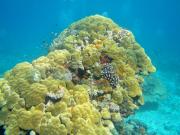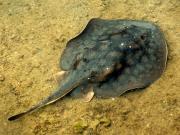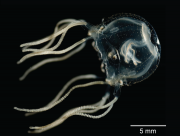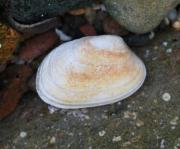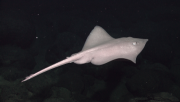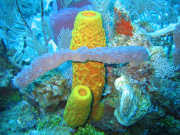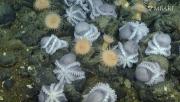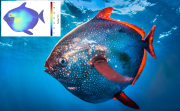If you knew that where you settled down would be home for the rest of your life, you’d make sure it was the best neighborhood you could find. That’s the situation larval corals face as they drift with ocean currents looking for the reef that will become their forever home. Light and chemicals in the seawater play a role in where larvae settle, but scientists recently discovered another factor: how the neighborhood sounds.
Articles
The Marine Science Institute's monthly column, Science and the SeaTM, is an informative and entertaining article that explains many interesting features of the marine environment and the creatures that live there. Science and the SeaTM articles appear monthly in one of Texas' most widely read fishing magazines, Texas Saltwater Fishing, the Port Aransas South Jetty newspaper, the Flour Bluff News, and the Island Moon newspaper. Our article archive is available also on our website.
As women enter middle age, their bodies gradually stop menstruating until they hit menopause, when they can no longer bear children. But humans aren’t the only mammals to experience menopause. In fact, five species of toothed whales go through “the change” as well—and it seems to be related to longevity.
Did you see the headlines earlier this year suggesting that a round stingray at a North Carolina aquarium may have become pregnant by one of the male sharks in her tank? As cool as the idea may sound, it is impossible. Sharks and stingrays are somewhat related (about as close as a human is to a mouse), but about 300 million years of evolution separate the species. Genetically, they’re too different to reproduce successfully. But the reality of what probably did happen is just as cool: it’s possible that Charlotte, the solo stingray, cloned herself.
You would think it’s necessary to have a brain to be able to learn new things. But at least one brainless marine creature has shown scientists otherwise. For the first time, a jellyfish recently revealed its ability to learn from experience. Scientists shared their results of an experiment in which a Caribbean box jellyfish learned to identify and avoid obstacles.
Two facts about cancer are constant across nearly all species on earth: the disease results from mutated cells growing out of control, and it’s not contagious. Or so scientists thought. Although scientists have learned in recent decades of two cancers that are contagious, one in dogs and another in Tasmanian devils, they’re now discovering that multiple cancers can spread like epidemics through shellfish populations, as well.
When researchers went exploring an ancient underwater volcano about a mile below the surface off Canada’s Pacific coast, they expected to find an extinct volcano in icy waters. Instead, they discovered that the volcano, rising more than a half mile from the ocean floor, is active—and in fact, the warm water it spews into the sea creates a utopia for the larger of two known nurseries of Pacific white skate eggs in the world. Scientists only recently learned that these skates, a relative of sharks and the second deepest dwelling skate in the world, live in these waters.
Sometimes scientific discoveries answer questions scientists have wondered about for years, but more often, a discovery simply raises dozens of new questions to explore. For example, why on earth do dozens of female great hammerhead sharks gather at two atolls in French Polynesia around the full moon each summer? While we don’t know the reason right now, the observation opens the door to more research to uncover the mysteries of this severely endangered species.
Every time you sneeze, your body is taking the opportunity to violently eject allergens, viruses, bacteria, chemicals or other particles trying to invade your nose that don’t need to be there. It’s waste that might even make you sick if your body didn’t force it out. But what if sneezing was also how you cleaned your entire body, like taking a shower? That’s how ”sneezes” are for sea sponges. And the sponges take their time with their body-cleansing too—up to half an hour for a single sneeze!
It’s no longer just a popular Beatles song—off the coast of central California, nearly two miles under the sea, is a “garden” of at least 6,000, and possibly up to 20,000, purple octopuses known to scientists as Muusoctopus robustus. Scientists first discovered the site about five years ago but needed time to investigate what led so many octopuses to congregate around Davidson Seamount, an extinct underwater volcano about 80 miles southwest of Monterey, California.
You might remember learning that mammals and birds are warm-blooded, meaning their bodies can generate heat to maintain a fairly constant body temperature, while fish, reptiles and amphibians are cold-blooded, relying on heat from the environment since they cannot regulate their body temperature on their own. But then, you’ve probably also learned that there’s nearly always an exception to every rule. Deep under the sea, that exception in the fish world is the opah.

